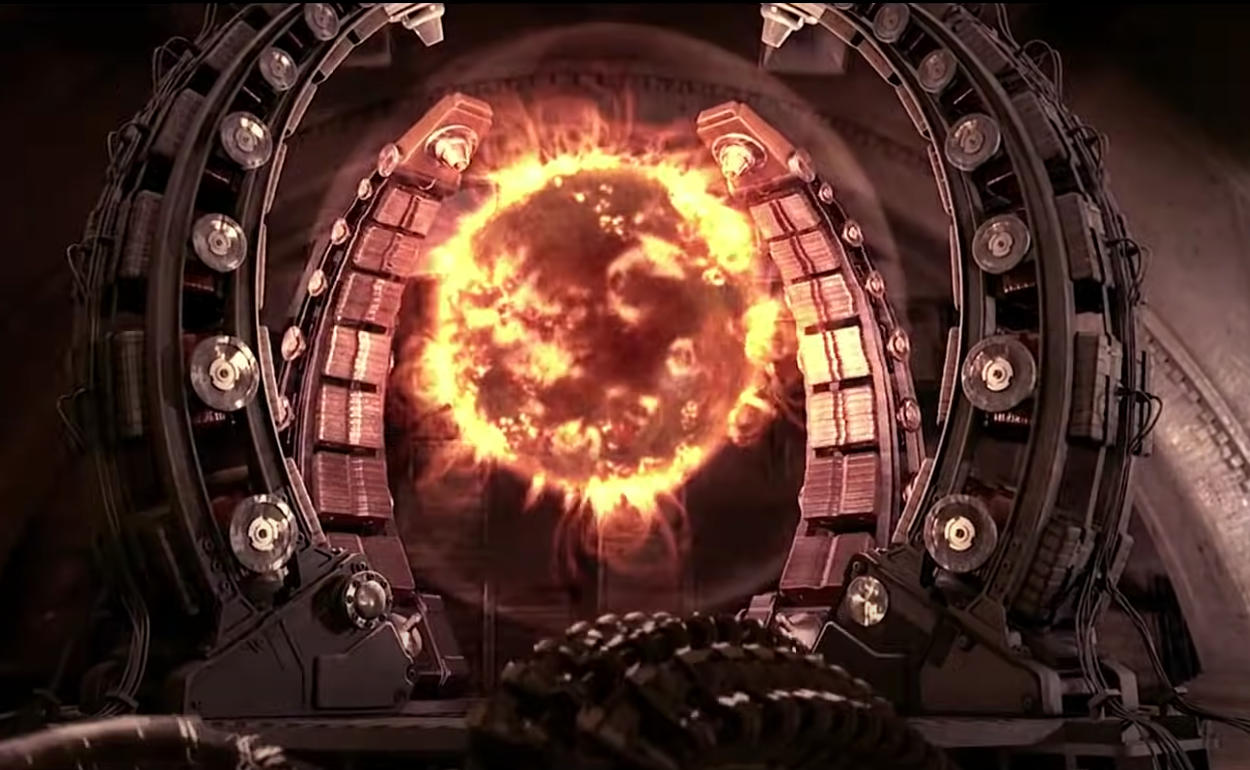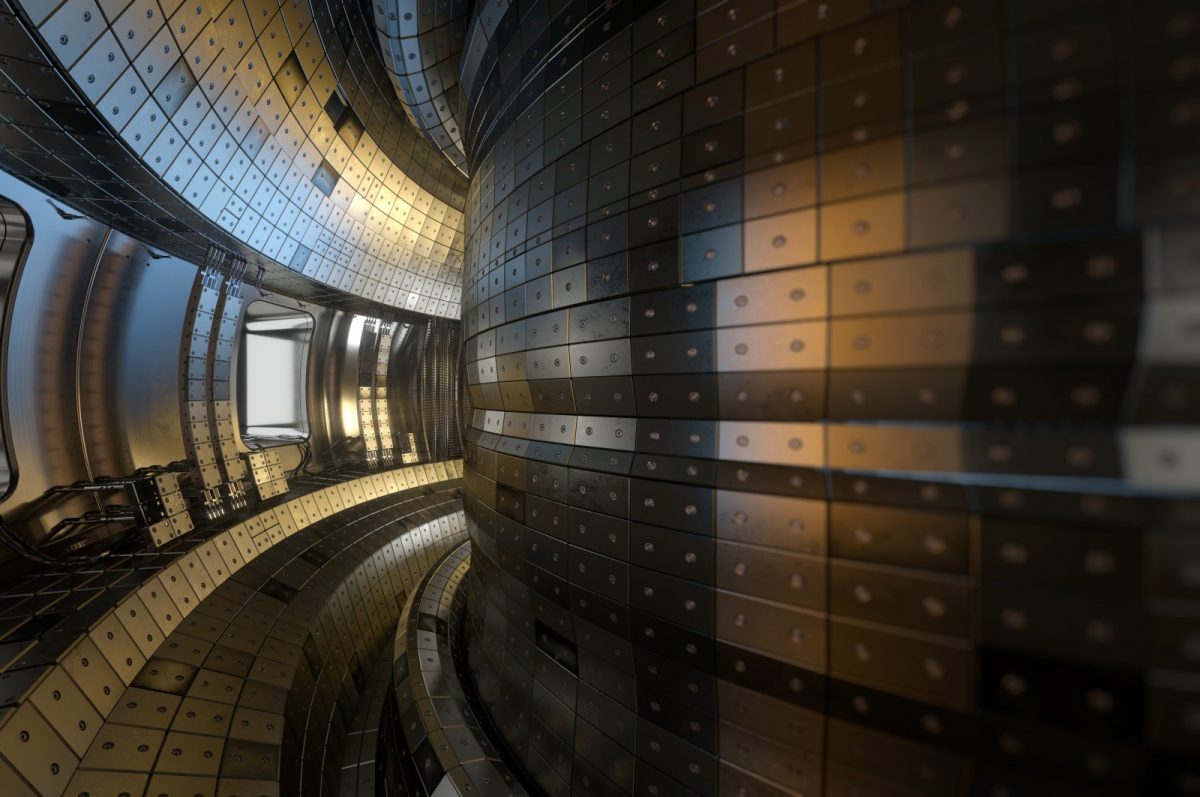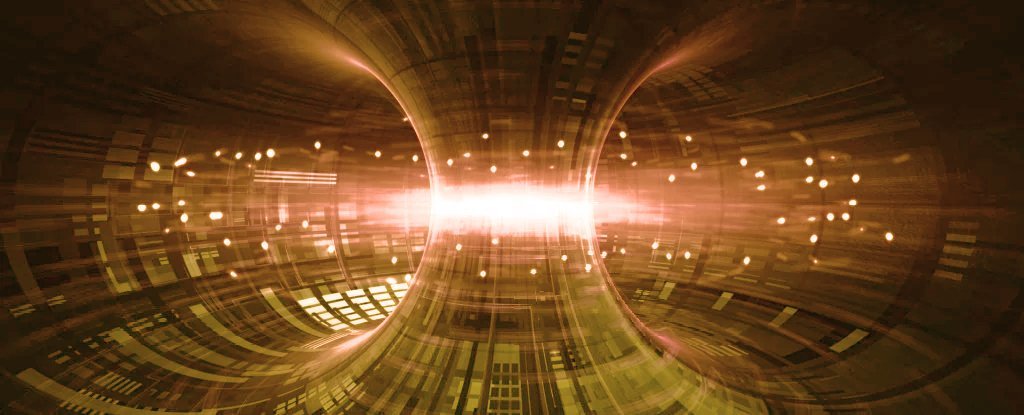A record-smashing breakthrough in the small town of Cullham, England has gotten mankind one big step closer to the elusive clean energy goal of controlled nuclear fusion.
If you saw the classic 2004 superhero film Spider-Man 2, you’ll no doubt remember the iconic line from Alfred Molina’s Dr Otto Octavius as he (briefly) creates and sustains a controlled nuclear fusion reaction: “The power of the sun in the palm of my hand.”
Naturally, things go horribly awry, and the scientist’s dreams of abundant, clean energy are seriously dashed, but mixed in with all the fiction was a healthy bit of science, too – and Doc Ock was definitely on to something.

THE HOLY GRAIL OF POWER PRODUCTION
Nuclear fusion has for decades been viewed as a near-limitless source of clean energy. The reaction – fusing the nuclei of two or more elements into one nucleus – liberates staggering levels of energy with very little in the way of undesirable byproducts.
Fusion is the process (called stellar nucleosynthesis) by which stars, including our own Sun, convert hydrogen to helium, with incredible amounts of heat and light energy generated as a result. In fact, our Sun creates as much energy in a single second as everyone on Earth is able to consume in a year!
Fusion also requires comparatively little fuel, and what it needs for our use as a power source is abundant and naturally sourced – it can even be extracted from seawater. The fusion process is also relatively carbon-neutral, making it all the more appealing as an alternative to fossil fuels.
Little wonder, then, that fusion is widely considered the holy grail of energy. It’s the flip side of nuclear fission, a process that scientists figured out in the 1940s. That reaction splits atoms and though it also releases enormous energy, it comes with terrible consequences and leaves behind waste that can remain toxic and radioactive for thousands of years.

Fusion, on the other hand, is comparatively benign, but as it’s basically akin to building a tiny star here on Earth, it’s proven much, much harder to create and control. (For a primer on fusion power, click here, but suffice it to say that it’s incredibly complicated.)
ACHIEVEMENT UNLOCKED
On Wednesday, February 9, scientists working in the village of Cullham, near Oxford in the United Kingdom, announced that they had successfully more than doubled the previous record length of time for generating and sustaining nuclear fusion.
Two significant things Spider-Man 2 got right with the film’s fusion generator included its fuel source and the containment required. Tritium, a heavy isotope of hydrogen, is used exclusively to fuel the reaction in the movie, and in real life, it’s one of two elements used, as well. (Most commonly, a deuterium-tritium fuel is used, as naturally occurring tritium is very rare on Earth, something else the movie gets right. However, tritium can be artificially produced.)
The other major point the movie accurately depicted was the challenge of containing the reaction. The heat generated by a fusion reaction is far, far in excess of what any element on Earth can withstand – an incomprehensible 150 million degrees Celsius, about 10 times hotter than the Sun’s centre – and so an incredibly strong magnetic field is required to contain the reaction.

The reactor used is called a tokamak, an English transliteration of a Russian acronym coined in 1957 (derived from тороидальная камера с магнитными катушками), meaning a toroidal chamber with a magnetic field. The chamber is a huge, donut-shaped machine that both generates and contains the reaction.
The breakthrough reaction just announced, which actually took place on December 21 last year in the Joint European Torus (JET), is significant because it lasted five seconds, more than twice the length of time of previous efforts. It may not seem like much, but in that short burst, the reaction released some 59 megajoules of energy. (Scientists note that it would have lasted longer, but five seconds is the maximum time before the reactor’s magnets overheat.)
RECORD-BREAKING EXPERIMENT FUELS EXCITEMENT
The experiment’s success has bolstered optimism that finally cracking the elusive nut of sustainable nuclear fusion is something that is likely to happen in the 21st century.
“Our experiment showed for the first time that it’s possible to have a sustained fusion process using exactly the same fuel mix planned for future fusion power plants,” Tony Donné, CEO of EUROfusion, said at a press conference.
EUROfusion, a consortium comprising 4,800 experts, students, and staff from across Europe, conducted the experiment in partnership with the UK Atomic Energy Authority.
The fuel mix Donné referenced is the aforementioned deuterium-tritium blend, which is likely to be used in the commercial-scale fusion power plants of the future, and is the source of enormous amounts of energy.
“The energy you can get out of the fuel deuterium and tritium is massive,” explained Tony Roulstone from the University of Cambridge’s Department of Engineering. “For example, powering the whole of the current UK electrical demand for a day would require 0.5 tonnes of deuterium, which could be extracted from seawater, where its concentration is low but plentiful.”

The notion of just half a tonne of material providing enough energy for all of the United Kingdom for a day might sound like the stuff of science fiction, but that’s the great potential and promise of fusion power.
For comparison, it would take five million kilograms of coal to generate the same energy as just 500 kilograms of fusion fuel. (One kilogram of deuterium-tritium produces about 1,500 Mw, the same amount of energy as 10,000 tonnes – that’s 10 million kilograms – of coal.)
Roulstone said the power generated by JET’s experiment in those five brief seconds could power one house’s energy needs for a day. “But if generated repeatedly, it could power thousands of houses.”
Experts say the results prove that nuclear fusion is possible, and no longer a pipe dream, nor an unattainable solution for the worsening climate change crisis. Some researchers believe we could be reaping the benefits of fusion within another generation.

Mark Wenman, a nuclear materials researcher at Imperial College London, said in a statement that the JET experiment’s results are “exciting,” and that they demonstrate that “fusion energy really is no longer just a dream of the far future – the engineering to make it a useful, clean power source is achievable and happening now.”
Ian Chapman, CEO of the UK Atomic Energy Authority, agreed, saying, “These landmark results have taken us a huge step closer to conquering one of the biggest scientific and engineering challenges of them all.”
BUILDING FOR THE FUTURE
Unfortunately, experiments leading up to and including this most recent one, have taken such a toll on the JET facility – in terms of both heat and pressure – the widely celebrated December effort will likely be its last.
Don’t shed too many tears, though. The JET tokamak has been in operation since 1983 and, over its lengthy lifespan, has decidedly helped push forward the realisation of fusion power. Construction on its heir apparent, the International Thermonuclear Experimental Reactor (ITER), began in 2013.

The project is at about 80% completion now, and is projected to commence fusion reaction in 2025 or 2026, several years ahead of schedule. The ITER tokamak, sited in the south of France, will be the world’s largest once completed, and is a joint effort being supported by the US, China, the European Union, India, Japan, Korea, and Russia.
The growing climate change crisis has hastened our urgency to migrate from fossil fuels to cleaner forms of energy. Fusion power holds immense promise, but even though we should see major strides in the coming decade, widespread implementation is still a long way off. Wednesday’s announcement, however, undoubtedly brought us one big step closer.
"ExpatGo welcomes and encourages comments, input, and divergent opinions. However, we kindly request that you use suitable language in your comments, and refrain from any sort of personal attack, hate speech, or disparaging rhetoric. Comments not in line with this are subject to removal from the site. "





















